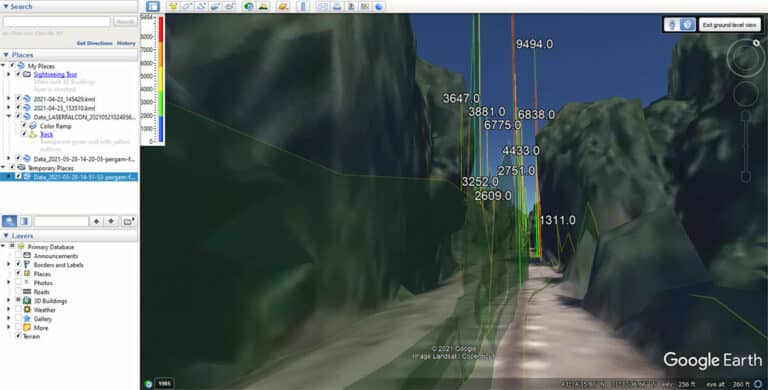3 Reasons to Use Drones to Detect Methane Gas Leaks
Even though you don’t see them, natural gas pipelines are all around us.
Though most of us picture miles of pipelines extending across vast tracks of wilderness, natural gas is everywhere we live.
In the United States alone, there are over 3 million miles of natural gas pipeline. This crucial piece of infrastructure delivers fuel to everything we need – from massive industrial facilities to our homes.
As with any infrastructure, pipelines degrade over time, which leads to methane gas leaks.
These can happen anywhere – from a remote area in Alaska to someone’s backyard in Maine, but detecting them with traditional methods is far from easy.
Here’s why it’s time to start using drones.
The Dangers of Methane Gas Leaks
Methane gas leaks cause a number of dangerous conditions. On a small scale, gas leaks can cause fires and natural gas poisoning. On a large scale, they significantly affect climate change.
In fact, methane is one of the most destructive greenhouse gases – with over 80 times the warming power of carbon dioxide over the first 20 years in the atmosphere. It’s also the largest component of natural gas.
Climate change is currently one of the most discussed issues on the global political stage, and for good reason. Extreme temperatures, floods, and superstorms now impact countries around the world.
Methane leaks must be detected and sealed as soon as possible to avoid damage to both people and the planet.
So, how do you effectively monitor millions of miles of natural gas pipelines? For many locations, few solutions are as perfectly suited as drones.
Traditional Inspection Methods are Outdated
In the past, detecting methane gas leaks was either done by personnel on foot (carrying plenty of equipment), or by airborne helicopters. Both worked well enough, but had major drawbacks.
The manual method is slow and labor-intensive. Trained professionals need handheld detectors to search for the presence of methane gas.
Although this is useful when you’re looking for leaks in residential homes, anything more presents challenges.
For large scales, helicopters were used to detect gas leaks for decades. While this works for finding leaks along pipelines in the wilderness, it’s incredibly expensive and can take weeks to schedule.
By comparison, drones work for both small and large projects, all while bringing operators added value.
Lower cost, increased safety, and improved flexibility are three key areas where drones outshine their alternatives.
Here’s why.
1) Cost Reduction
Both trained professionals and helicopters are expensive.
Personnel take time and money to train, insure, and expect a paycheck. Helicopters range in cost from several hundred to thousands of dollars per hour. On top of it all, gas leak inspections require specialized equipment.
For these reasons, companies expected to shell big bucks to get the job done.
However, drones don’t require the overhead that people do, and can be bought and flown at a fraction of the cost of a helicopter.
Some of the largest companies in the oil and gas industries are already investing heavily in drones, equipping them with gas detection payloads.
For these companies and others like yours, it just makes economic sense.
2) Improved Safety
Detecting methane gas leaks is a dangerous task – many industrial gases are flammable, corrosive, and poisonous.
Using handheld sniffers (the tool to detect leaking gas) and other equipment means putting people in harm’s way. Why should you risk the safety of your personnel, when drones can safely operate in a wide range of hazardous environments?
Drones can fly into environments where extreme temperatures, toxic fumes, and even radiation won’t affect performance.
The wide range of payload options available on drones gives you all the tools you’d expect a human or helicopter-based crew to utilize.
Drones are the ideal fit for safety-conscious organizations.
3) Increased Flexibility
Unlike inspection teams and helicopter flights, drones are ready at a moment’s notice. This is why the most established players in the oil & gas space use drones for more and more applications.
With all of the options available, drones detect a wide range of gas leaks, boosting flexibility.
The small logistics footprint of drones means they fit into any situation – from an oil rig in the middle of the Gulf of Mexico, to natural gas pipelines crossing the Canadian Rockies.
The best part?
You can use either in-house operations or contracts with drone service providers to get the job done quickly and effectively.

The Takeaways
The portability of drones and the speed they’re deployed make adding gas-detecting UAVs an easy solution.
Methane gas leaks pose numerous dangers and deserve to be identified with the best equipment possible.
Drones carrying gas leak detection equipment are less expensive, safer, and more flexible than traditional detection methods.
The bottom line: if you’re not using drones yet, your competition probably is.
Isn’t it time you tried a better way?
So, which drone is right for you? And, how do you get started? Do you hire out or bring your drone program in-house?
At Consortiq, we help you find a better way with drones, from consultation and program implementation to actually doing the work for you.
Ready to learn more? Just complete the form below to schedule a risk-free consultation!

David Daly - Contributing Author
David Daly, is an award-winning photographer/writer and licensed (FAA) Commercial sUAS pilot. A graduate of the United States Naval Academy, David is a former Marine Corps officer with a BS in Oceanography and has earned his MBA from the University of Redlands. David has worked for Fortune 100 companies and has a background in aerospace, construction, military/defense, real estate, and technology.
